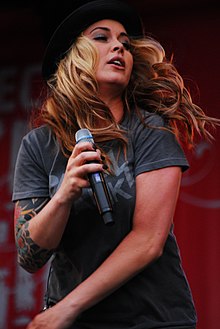Culture of the Netherlands
The culture of the Netherlands is diverse, reflecting regional differences as well as the foreign influences built up by centuries of the Dutch people's mercantile and explorative spirit.
However, both Dutch Low Saxon and Limburgish spread across the Dutch-German border and belong to a common Dutch-Low German dialect continuum.
There is a tradition of learning foreign languages in the Netherlands: about 89% of the total population have a good knowledge of English, 70% of German, 29% of French and 5% of Spanish.
After independence the Netherlands adopted Calvinism as a quasi-state religion (although never formally), but practiced a degree of religious tolerance towards non-Calvinists.
[2] The Sociaal en Cultureel Planbureau (Social and Cultural Planning Agency, SCP) expects the number of non-affiliated Dutch to be at 72% in 2020.
[5] The Dutch constitution guarantees freedom of education, which means that all schools that adhere to general quality criteria receive the same government funding.
There are also sizable populations of Hindu immigrants from India and Sri Lanka, and some Western adherents of Hinduism-oriented new religious movements such as Hare Krishnas.
[citation needed] Dutch painters, especially in the northern provinces, tried to evoke emotions in the spectator by letting him/her be a bystander to a scene of profound intimacy.
The amount paid determined each person's place in the picture, either head to toe in full regalia in the foreground or face only in the back of the group.
Many genre paintings, which seemingly only depicted everyday life, actually illustrated Dutch proverbs and sayings, or conveyed a moralistic message, the meaning of which is not always easy to decipher nowadays.
Favourite topics in Dutch landscapes were the dunes along the western seacoast, rivers with their broad adjoining meadows where cattle grazed, often a silhouette of a city in the distance.
Vincent van Gogh was a post-Impressionist painter whose work, notable for its rough beauty, emotional honesty and bold color, had a far-reaching influence on 20th-century art.
In the 20th century, the Netherlands produced many fine painters and artists including (but not limited to): Roelof Frankot, Salomon Garf, Pyke Koch and many more.
After World War I, De Stijl (the style) was led by Piet Mondrian and promoted a pure art, consisting only of vertical and horizontal lines, and the use of primary colours.
New town halls and storehouses were built, and many new canals were dug out in and around various cities such as Delft, Leiden and Amsterdam for defence and transport purposes.
The architecture of the first republic in Northern Europe was marked by sobriety and restraint, and was meant to reflect democratic values by quoting extensively from classical antiquity.
In general, architecture in the Low Countries, both in the Counter-Reformation-influenced south and Protestant-dominated north, remained strongly invested in northern Italian Renaissance and Mannerist forms that predated the Roman High Baroque style of Borromini and Bernini.
At the end of the 19th century there was a remarkable neo-Gothic stream or Gothic Revival both in church and in public architecture, notably by the Roman Catholic Pierre Cuypers, who was inspired by the Frenchman Viollet le Duc.
Examples are Secret agent 327 and Storm, written by Martin Lodewijk and Jack, Jacky and the Juniors by Jan Kruis, as well as cartoons with a more literary style, like Viking series Eric de Noorman by Hans G. Kresse and Tom Poes & Heer Bommel (Tom Puss/Oliver B. Bumble) created by Marten Toonder.
Children's comic book series Miffy (Dutch: Nijntje) by Dick Bruna has been published in over 50 languages,[14] and predates the similarly drawn Hello Kitty by over ten years.
Traditional Dutch music is a genre known as levenslied, meaning 'song of life', to an extent comparable to French chanson or German schlager.
As of the 1980s, more and more pop musicians started working in the Dutch language, partly inspired by the huge success of the band Doe Maar.
[18][19] Acclaimed harpist Lavinia Meijer in 2012 released an album of works by Philip Glass that she transcribed for harp, with the approval of the composer.
Internationally successful Dutch actors include Famke Janssen (X-Men films), Carice van Houten (Game of Thrones), Rutger Hauer (Blade Runner), Jeroen Krabbé and Derek de Lint.
Imported TV programmes, as well as interviews with responses in a foreign language, are virtually always shown with the original sound, and subtitled.
[23][24] Serious Request is a Red Cross fundraiser, held the week before Christmas on pop music station 3FM, and has grown to become an international franchise adopted by eight other countries.
The Top 2000 is an integral broadcast of the 2,000 most popular songs of all time on station Radio 2[25] from noon 25 December Christmas Day through midnight of New Year's Eve.
Sinterklaas has a companion known as Zwarte Piet, which in recent years has come under scrutiny in light of accusations of racist caricatures.
In North Brabant, Limburg and some other parts of the Netherlands people celebrate Carnaval similar to the carnival of the German Rhineland and Belgium Flanders.
A truly huge amount of different pies and cakes can be found, most notably in the southern provinces, especially the so-called Limburgish vlaai.











